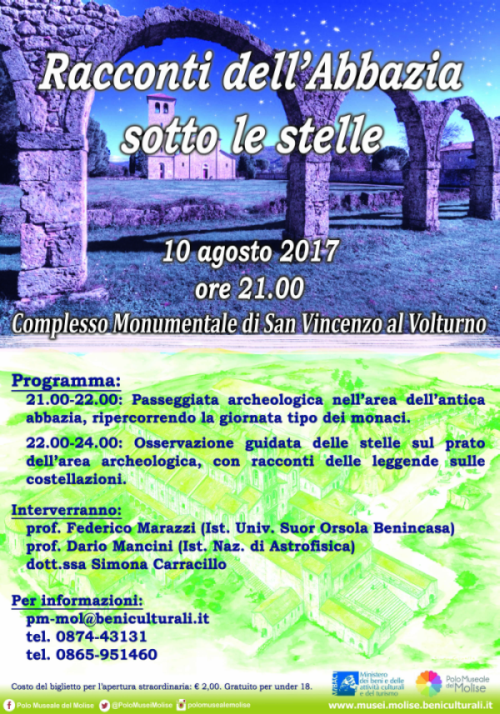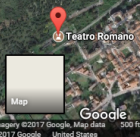
Workshops
2019
ARTS AND TALES- HERCULES IN THE LAND OF THE SAMNITES
Workshop in collaboration with the Art High-School “A. Manzù” of Campobasso during an Erasmus+ program
Hercules is the most beloved deities to the Samnites, pre-Roman population of Molise (VI- I cent BC). His figure humanized the nature of the Italic gods before contact with the Greek world. Hercole was in particular the protector of the flocks. The Samnite sanctuary dedicated to Hercules, in Campochiaro, is located near the main transhumance route, used in protohistoric times, which later became an historical epoch the tratturo Pescasseroli-Candela. Of Hercules there are also various bronze votive statues depicting it with or two more characteristic symbolic elements: the lion’s skin and the club.

The Artistic Lyceum “A. Manzù” of Campobasso is a partner of an Erasmus + program KA2 – Cooperation for Innovation and the Exchange of Good Practices, Strategic Partnerships for Schools Only, entitled: “ART & TALES, in partnership with others high school in Romania, Bulgaria, Bosnia-Herzegovina, Austria, Hungary and Spain. The Polo Museale of Molise was involved on the occasion of the arrival in Molise of 24 students and related teachers from the partner countries, to propose workshops and activities: students, through various forms of art and archaeological heritage, should have learned the legend of Hercules. Trough laboratories, workshop and guided tour, in collaboration between artistical lyceum “Manzù” of Campobasso and the territorial offices of the Ministry of Cultural Heritage and Activities (Polo Museale del Molise and Soprintendenza Archeologia, Belle Arti e Paesaggio per il Molise), students have been able to be protagonists in the various arts to tell, through archaeological materials, new technologies and archaeological sites related to Hercules and transhumance.
ARCHAEOLOGICAL RESTORATION LABORATORY
The sanctuary of Hercules in Campochiaro was excavated by the Archaeological Superintendence of Molise and the material relating to votive offerings and terracotta decorations was the subject of a restoration workshop at the Samnitic Museum in Campobasso. Followed by the restorer and the archaeologist of the museum, the students were able to test the restoration on not particularly precious or delicate ceramic material. In addition to learning the basic techniques of ceramic restoration, the students could touch materials that were part of offering to Hercules in the sanctuary.

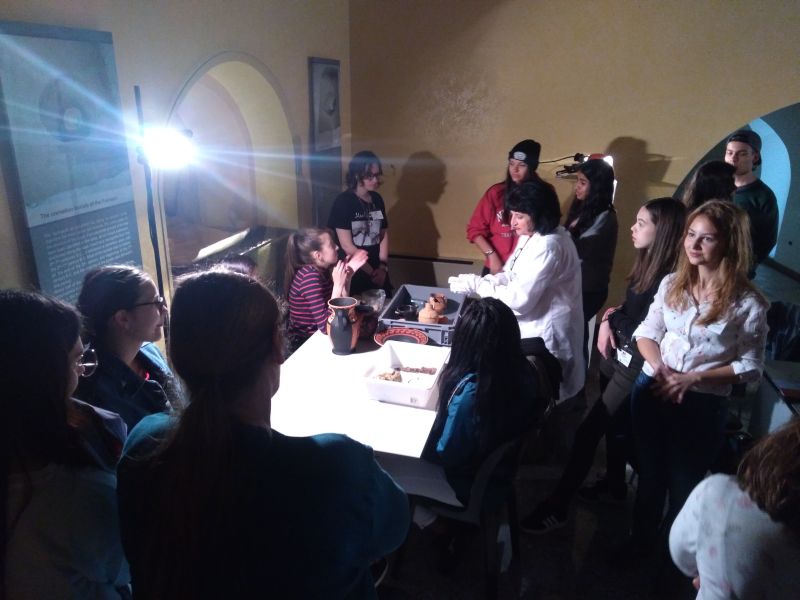
3D TECHNOLOGY AND CREATION
Following the Hydria project, between the Polo Museale del Molise and the University of Molise, 3D images of the archaeological finds of the Samnite Museum were acquired. One of these images, relating to the votive statue of Hercules found in Trivento, was made available to the artistic lyceum “Manzù” for a 3D printing workshop and subsequent realization of plaster copies, as a part of the laboratories within the experience Eramsum plus.
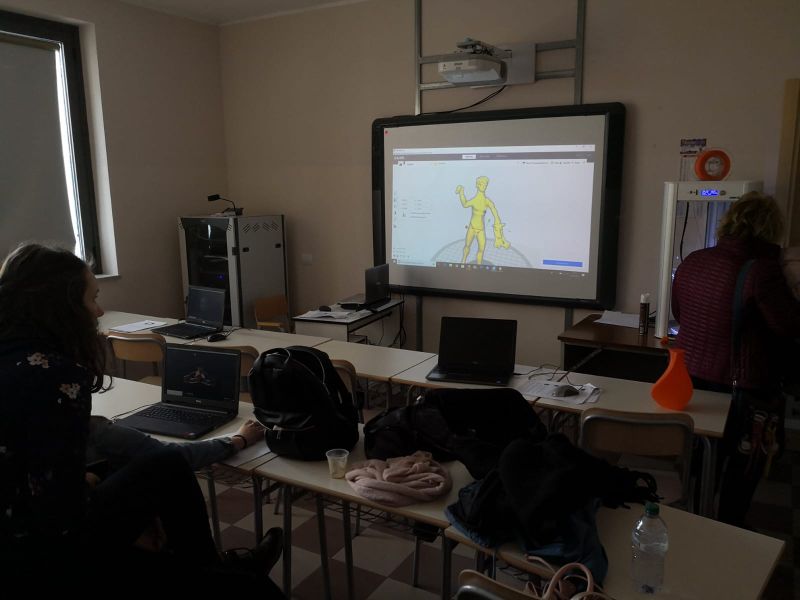
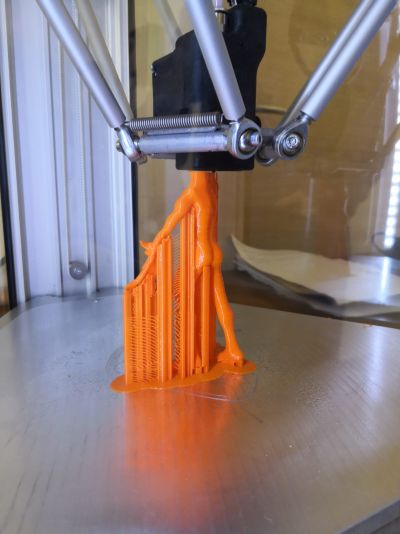
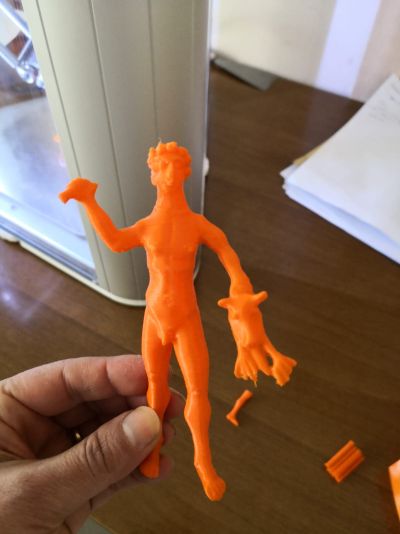
TELLING OUR STORIES IN ANCIENT TEATHER
In trip day in the roman city of Sepino- Altilia, the students could be guided on a visit to the city born in the Ist century BC on the transhumance route and not far from the sanctuary of Ercole di Campochiaro.
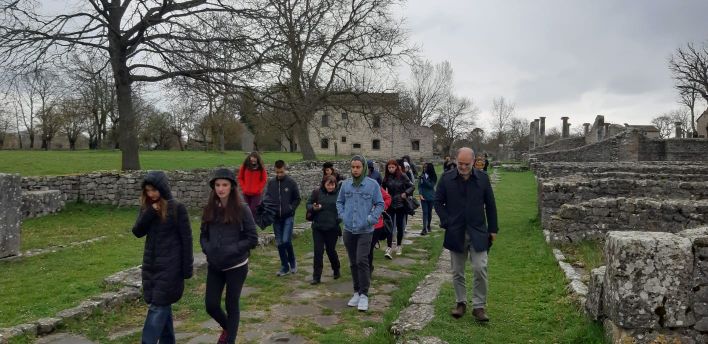
Taking advantage of the presence of the frescos of the Roman theater, in this city founded on a way of transhumance, the students of each Nation presented to the others, with spontaneous forms of expression, the legends of the respective countries.
The 3D printing work, provided by Polo Museale del Molise
Performance by the Bosnian student singing a legend
Performance by Hungarian students telling a legend
Performance by Austrian students telling a legend
Performance by the Spanish students telling a legend
Third National Journey of the landscape, March 16-17, 2019
During the Third National Lanscape Day, promoted by Ministry of the Cultural Heritage and Activities, the peripheral Offices of the Ministry and the Association Italia Nostra of Campobasso organized an excursion on the territory on Saturday 16th march, preceded by a meeting in memory of the landscape philosopher Rosario Assunto on Thursday 14th march.
In the congress room of the Regional Secretariat of the Ministry in Campobasso, scholars and specialists have shown to the audience the work and thoughts of Rosario Assunto “Outragues landscape aesthete”.

At the end of the day the cattle track (the tratturo) Lucera – Castel di Sangro was presented to the public, a path, through the Municipalities of Duronia and Civitanova del Sannio, where the audience was led on Saturday 16th March on a walk to discover the historical landscape and sites of archaeological interest, retracing the route of historical transhumance.

A development project in this regard has been promoted by the Superintendence of Archaeology, Fine Arts and Landscape for the Molise.


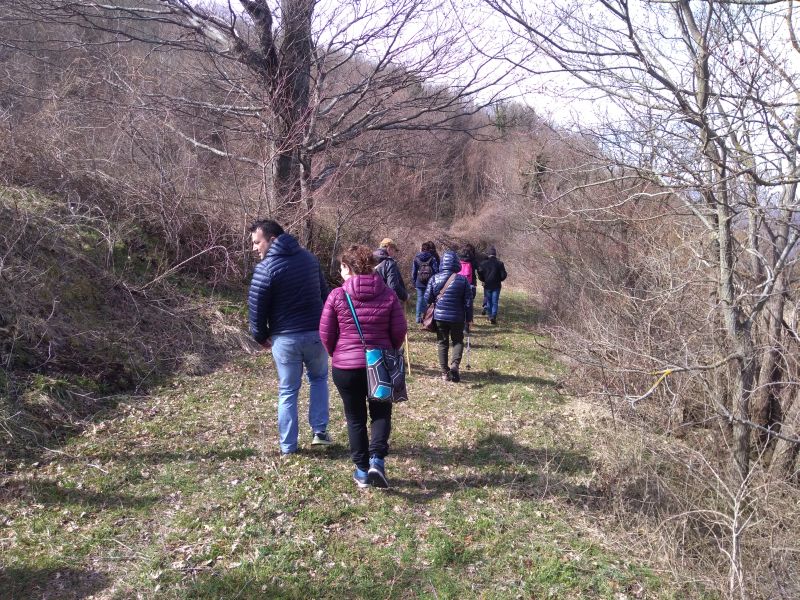
Along the path, led by the archaeologist Francesca di Palma, people from outside the region and natives of Molise took part to the walk and were interviewed by a national television broadcast on the regional news program.
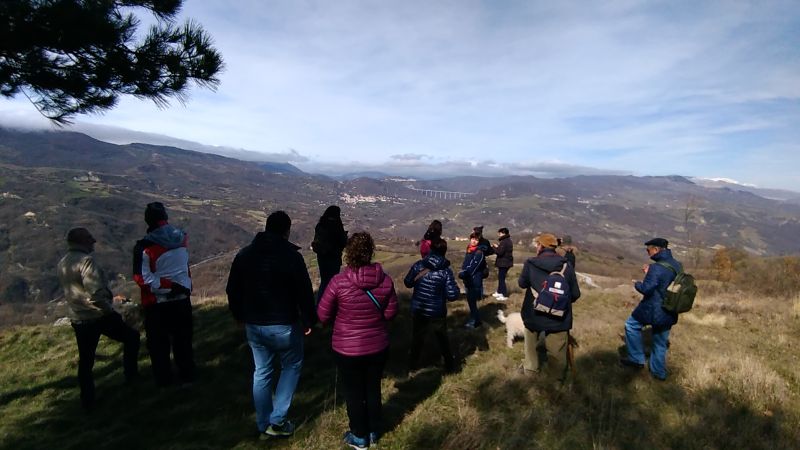
The walk started from the Samnite hillfort of Duronia, which is located near a natural monument called “The Giant”, due to a of the shape of the rocks that make the hill like a human face looking at the sky. From there, like the ancient Samnites, it was possible to stare a wide territory along the cattle-track that led to the mountains of Abruzzo: along the tratturo the view spaced also on the remaining archaeological monuments that would have been reached later during the day.
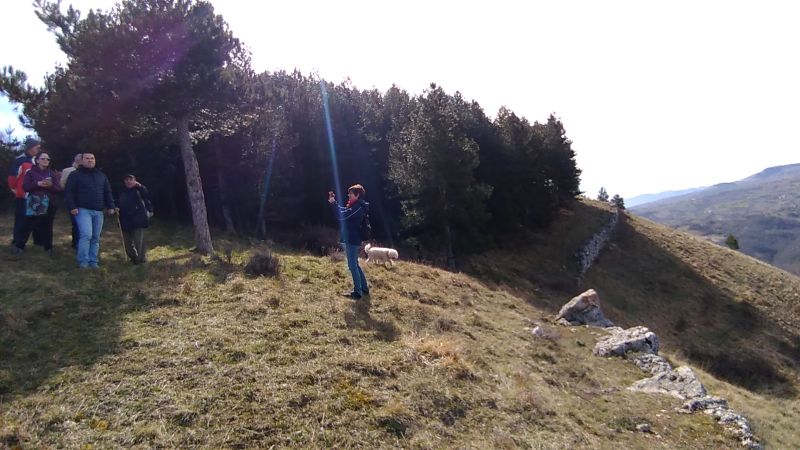
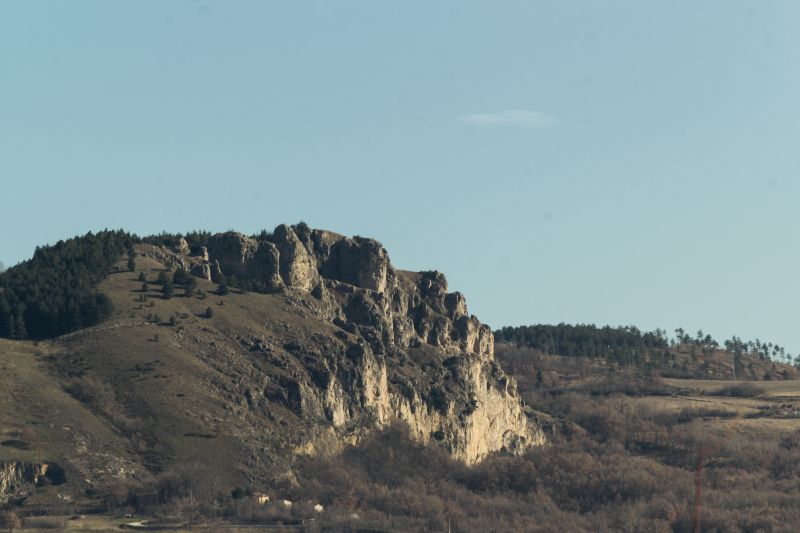
From a pre-Roman monument, we moved to a medieval one. The Benedictine abbey of De Jumento Albo, placed on the cattle-track already in the Municipality of Civitanova del Sannio, today visible as a ruin: it dates back to the year 1000, but it was certainly built on a Roman villa rustica (a farm). In the last years the church is being excavated by the University Suor Orsola Benincasa of Naples and should ideally link the tratturo to the Benedictine abbey.
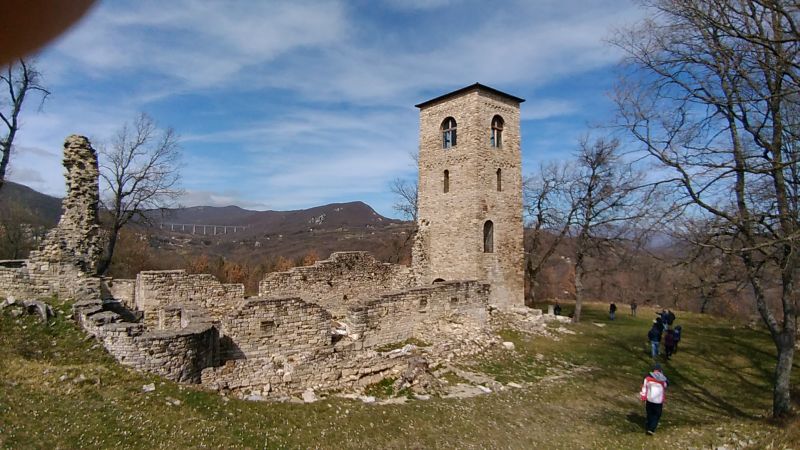
During the explanation, the audience was also made aware of the problems of conservation and promotion of this important medieval site.
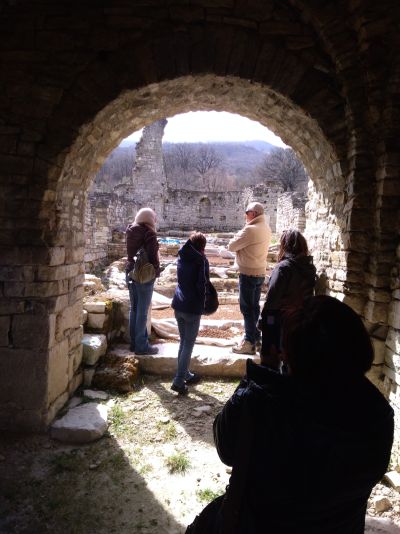
Always along the cattle-track, the shelter of Morricone del Pesco was finally reached with its Paleolithic paintings and engravings dating back to a period between the Iron Age and the Middle Ages.
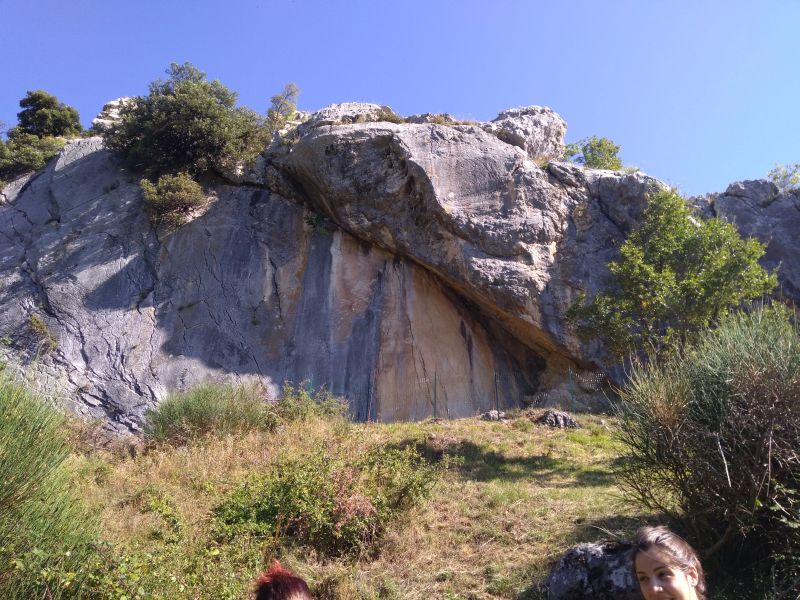
The public was thus able to ascertain the link between the route of transhumance and the archaeological sites which, not by chance, are connected to these paths. It was therefore possible to experience, walk and learn in the midst of the historical landscape the close ties between prehistory, history and the territory.
2018
A visit in the world of Lombards, between San Vincenzo al Volturno and the Archaeologicl Museum of Venafro, September, 2018
During an activity as part of alternation school/job program (by the Ministry of Education and University Research), a group of student of the high school “Galanti” of Campobasso they worked on a week concerning the Lombards in Molise. Since that the main archaeological area related to the Lombards in Molise is the Monumental Complex of San Vincenzo al Volturno, the students did a study visit there and to the Archaeological Museum of Venafro, where are exposed the materials by San Vincenzo al Volturno.
Accompanied and oriented by an archaeologist, they carried out a photographic reconnaissance accompanied by comments resulting from their observations.
Students Nicola, Aurora and Rossella: the ruins of the abbey of San Vincenzo al Volturno
“When you visit the Epiphanius crypt you are impressed by the frescoes, which were made many centuries ago.What surprise the viewer is that those frescoes get a different interpretation according to the century. Today we give to that work of art a different meaning from the original one.”
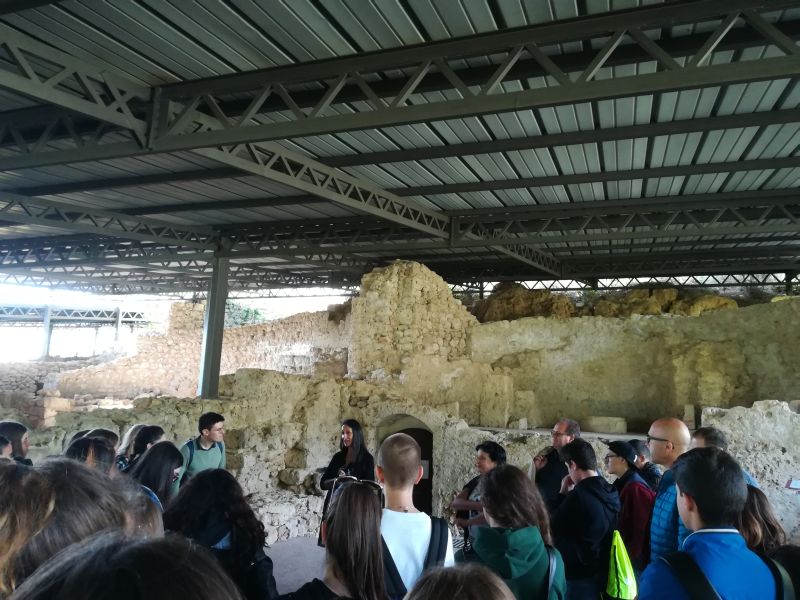
“When the visitors understand the different informations about Castel San Vincenzo it’s possible to imagine the different objects and actions that characterized the monks life-style, and that’s awesome”.
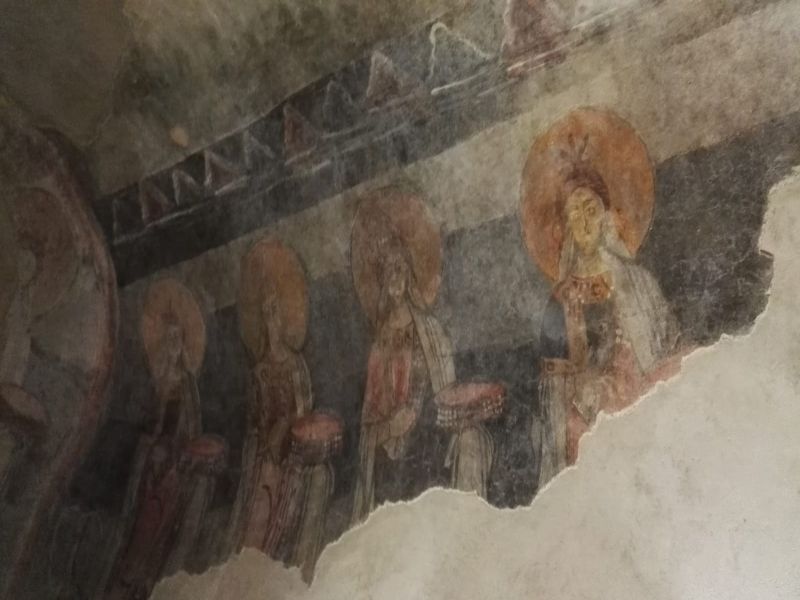
“with the new technologies you can see the reconstructions of the lost abbey on the field and it’s like going back in time.”
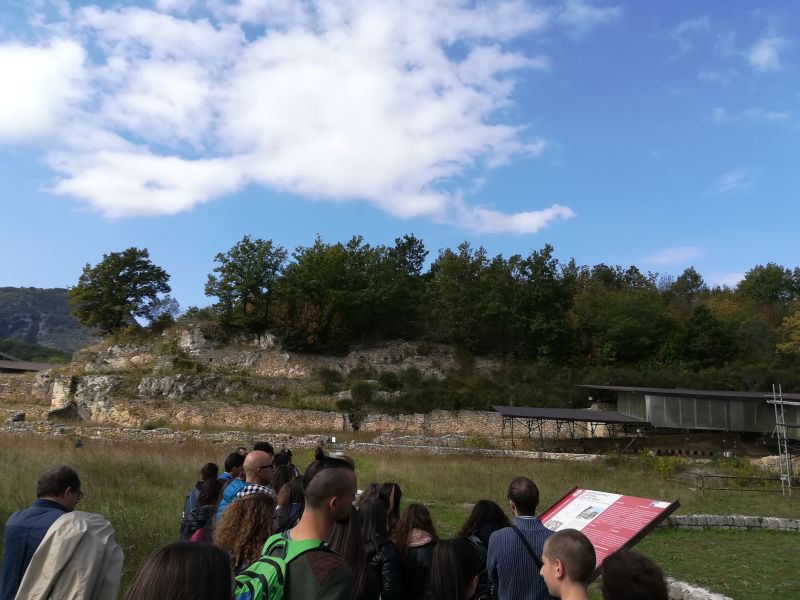
“discovering the monks’ tombs under the ruins of the abbey’s main church”
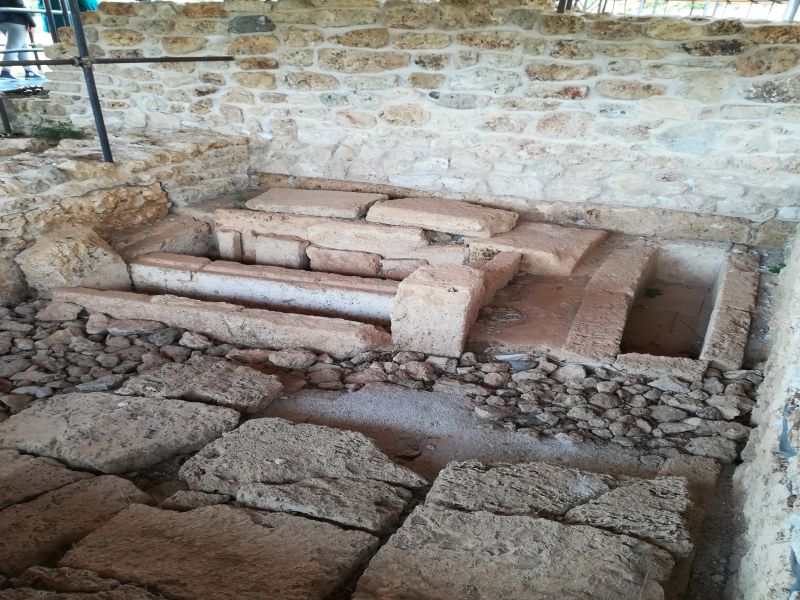
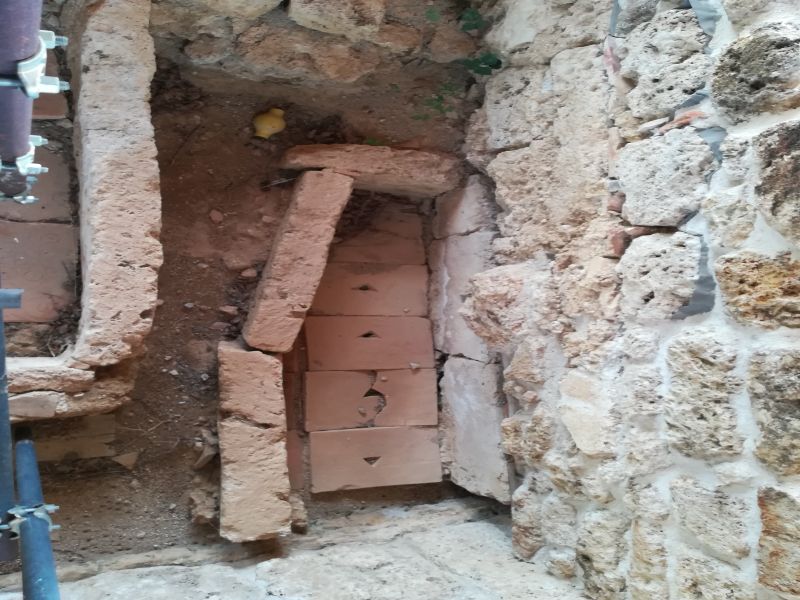
“ a wonderful place near the Benedictine abbey: the springs of the Volturno river”
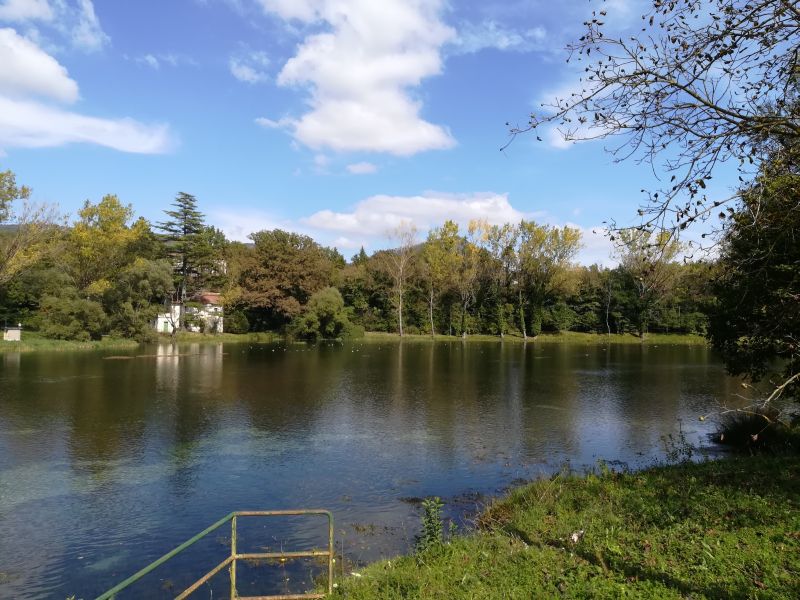
Students Antonietta, Bianca and Gaia: the Archaeological Museum of Venafro
“ it has been talk to each other about the story of Venafrum museum”
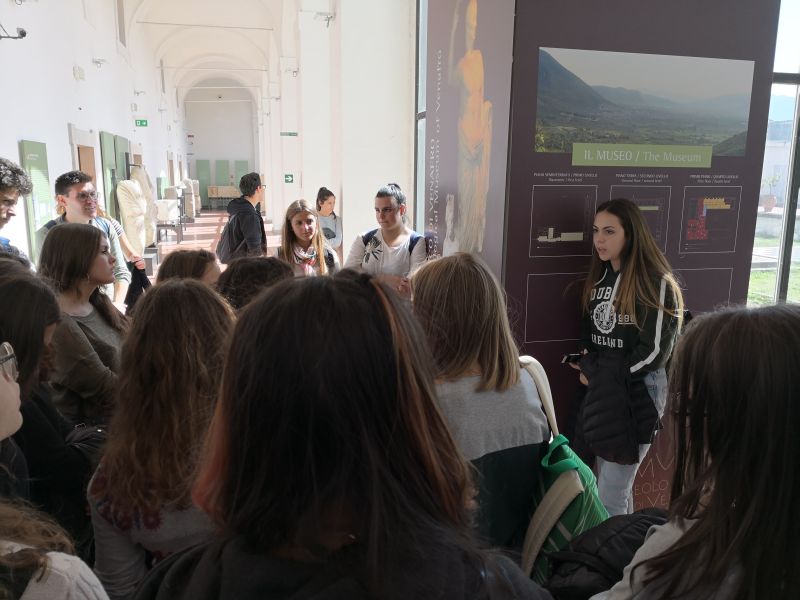
“It has been interesting for us going downstairs into the deposits because it is not an everyday experience to see all the findings not shown. Now they are set in the old dormitory. We had the opportunity to show what we learnt before, recognizing the objects”
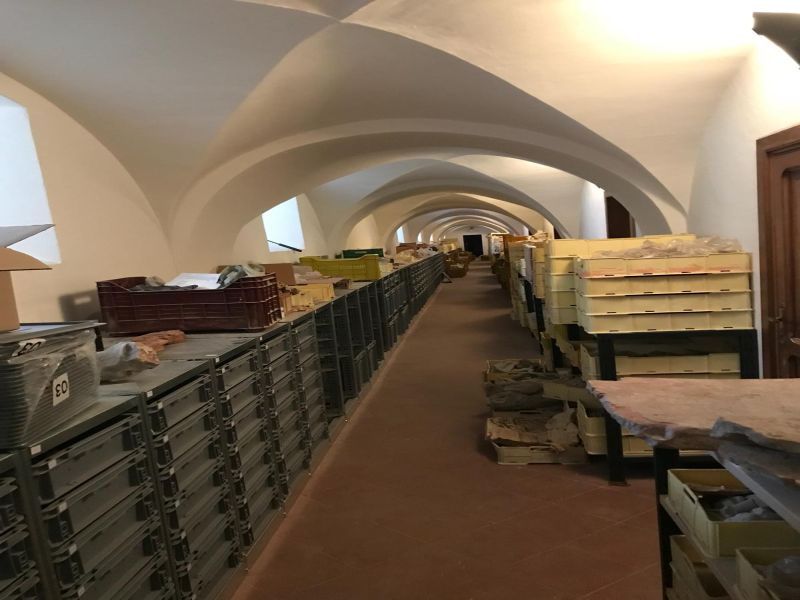
“The museum is situated in an ancient convent. In this picture we can see the old kitchen (now used for the exhibition) with the wall flue”
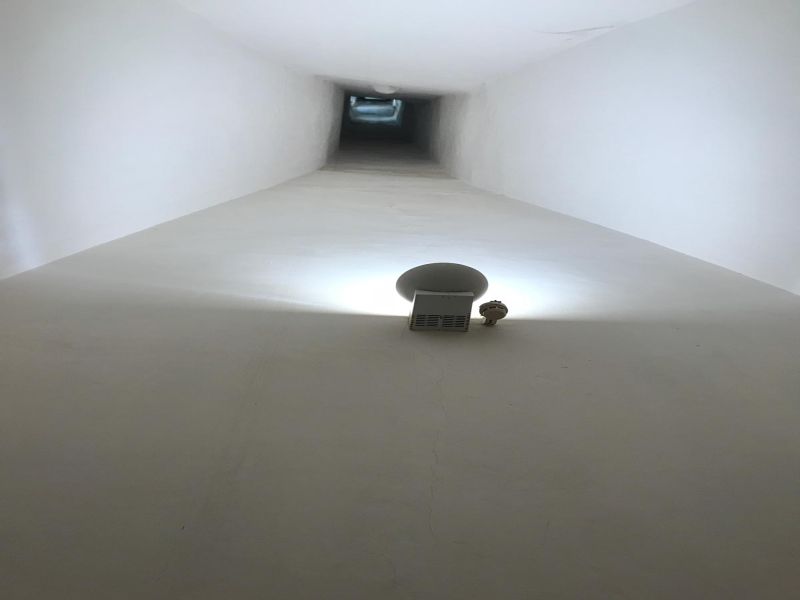
“Augustus edict written on a stone. It concerned the rules of Venafrum acqueduc, which starts at the springs of the Volturno near to the abbey of San Vincenzo. The edict establish that “The praetor peregrinus will give the case to the judgement the reciperatores, for judgement till 10 thousand coins and with ten witnesses at least.”
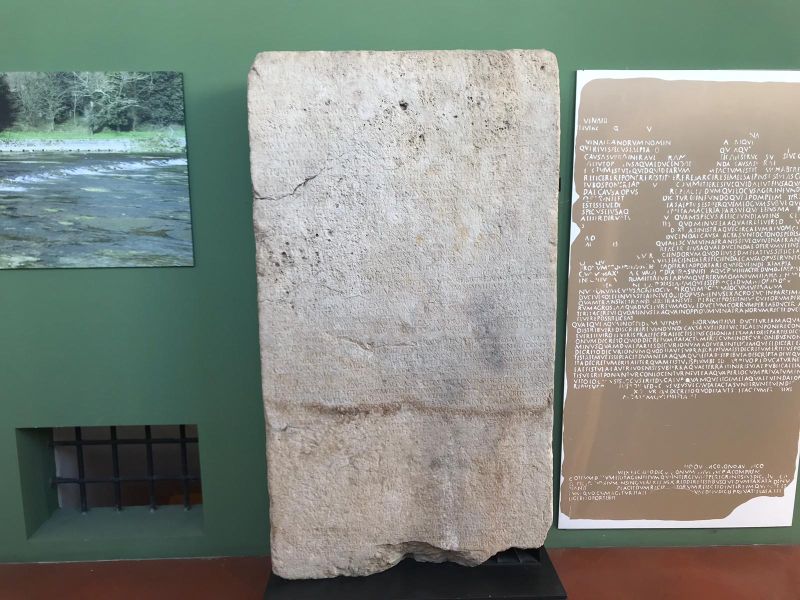
Students Martina and Katia: the archaeological finds in the Archaeological Museum of Venafro
“It’s great to see how the floor in opus settile of the chapel of Santa Restituta shows the refinement of the interiors of the abbey churches of San Vincenzo al Volturno”
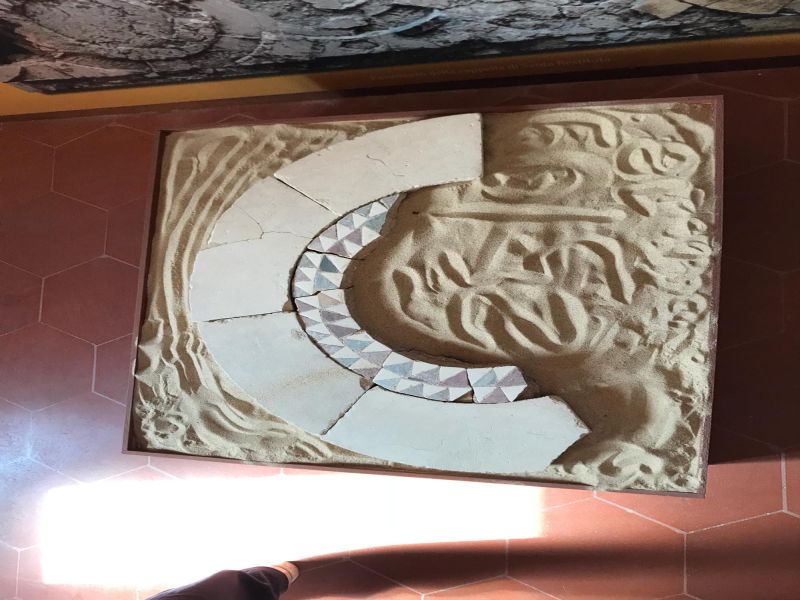
“It is incredible how in an abbey that today appears as a pile of ruins, you could produce such refined jewelry, more than 1200 years ago”
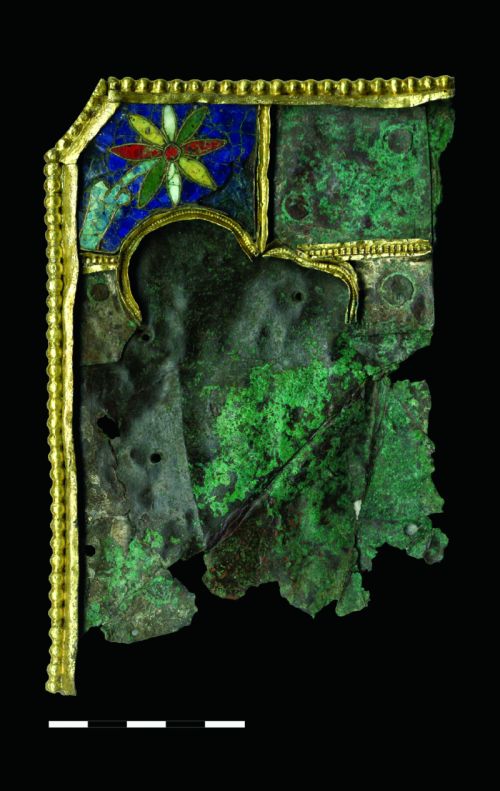
“imagine how exciting the abbey walls full of colors and shapes of these wonderful frescoes”
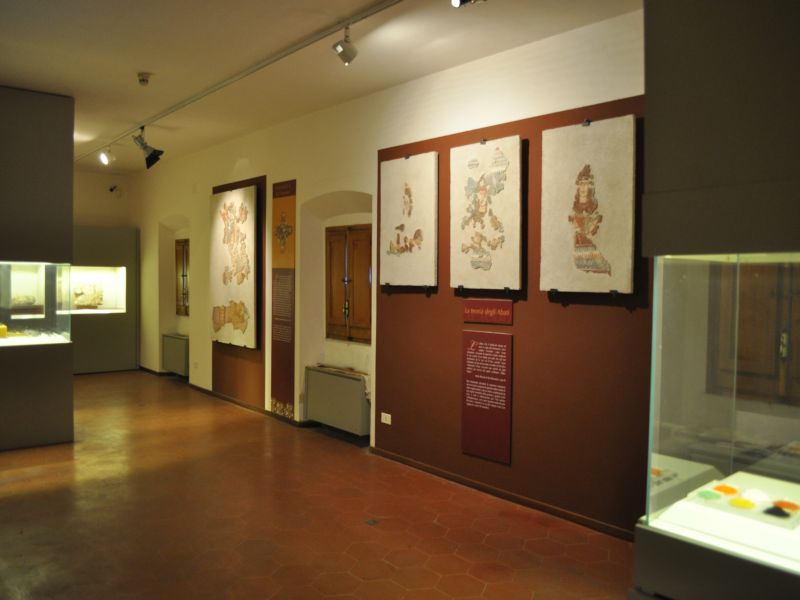
Journeys of research and awareness – Civitanova del Sannio (IS)
During the European Journeys of Heritage 2018, the Municipality of Civitanova del Sannio and Italia Nostra Campobasso Association with the patronage of the Regional Direction of Statal Musems and Superintendence Archaeology, Fine Arts and Landscape for the Molise, they have organized four days of archaeological survey in the area of the San Lorenzo lake and the Santa Brigida. It consists of reconnaissance, recognition of finds and debate coordinated by archaeologists and open to all citizens who want to participate to understand the job of the archaeologist and the archaeological heritage of the Montagnola Molisana area.
The shelter of Morricone del Pesco
In a rock shelter, near the village of Civitanova del Sannio, here are manifestations of rock art, both painted and engraved, dating respectively to the Upper Paleolithic and to the first Iron Age. It is possible that the shelter has been frequented by time immemorial by shepherds, during transhumance since it is located beside the tratturo Castel Di Sangro – Lucera and mountain roads leading to high altitude pastures.
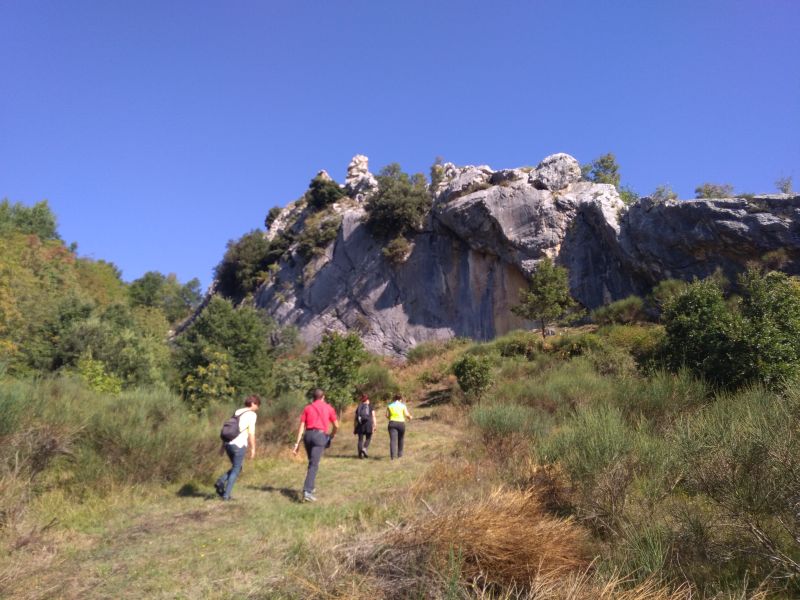
San Lorenzo lake, 8th- 9th September
The lake of San Lorenzo is a carsick lake, it’s about a thousand meters above sea level and in a mountainous area since several centuries involved in a vertical transhumance (montain pasture). The lake, being karst, in summer and autumn is dry and reduced to a peat bog.
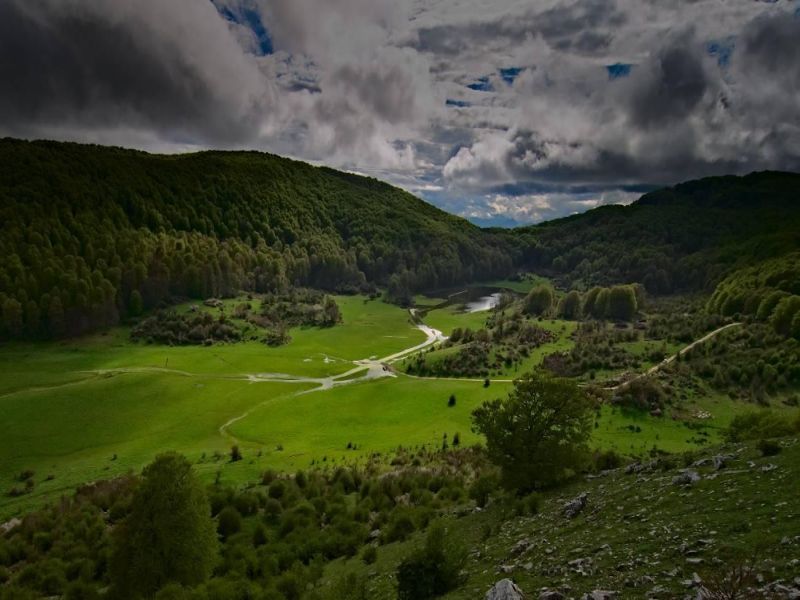
This area has been reported in the 1999 by Mr Bruno Paglione, in 2005 and 2009 has been investigated by University of Ferrara and University of Molise with systematic surveys.
The data collected by the Universities, mainly lithic materials, have allowed to document the presence of a prehistoric high altitude camp and two phases of frequentation: Middle – Upper Paleolithic and Neolithic.
The Paleolithic phase to be related to the prehistoric hunters and the Neolithic phase to be connect to the first transhumant shepherds.
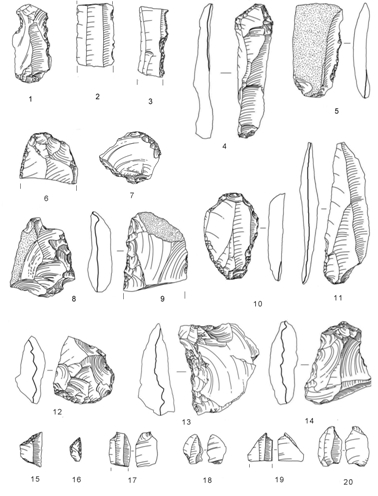
Days 8th and 9th September
A team of archaeologists and enthusiastic citizens from the village of Frosolone, Civitanova del Sannnio and Campobasso surveyed specific areas of the lake, according to the results of the latest survey in 2009. During the works the citizens who participated, had the opportunity to understand surface prospecting techniques: how to position yourself…
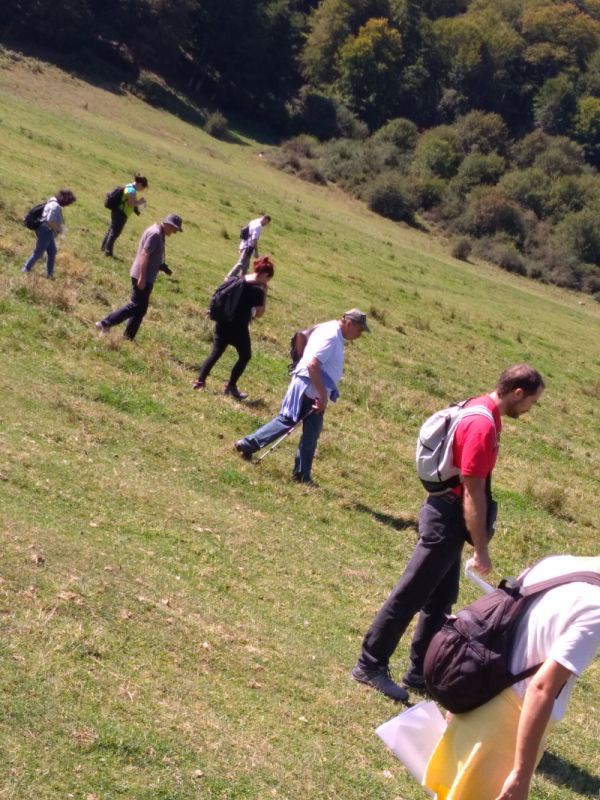
…the use of topographical maps and of the survey Apps to register the interest points and to place on the map the pictures of the finds
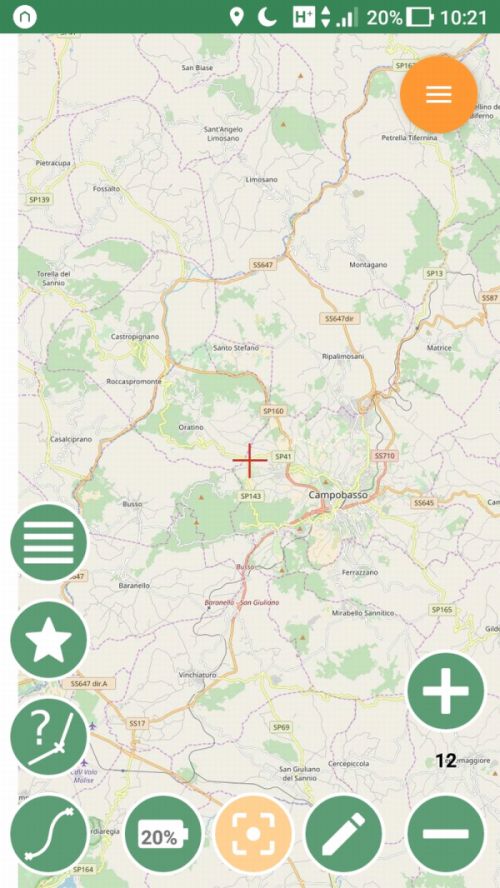
…..how recognize the archaeological artefacts ( lithic and ceramic)
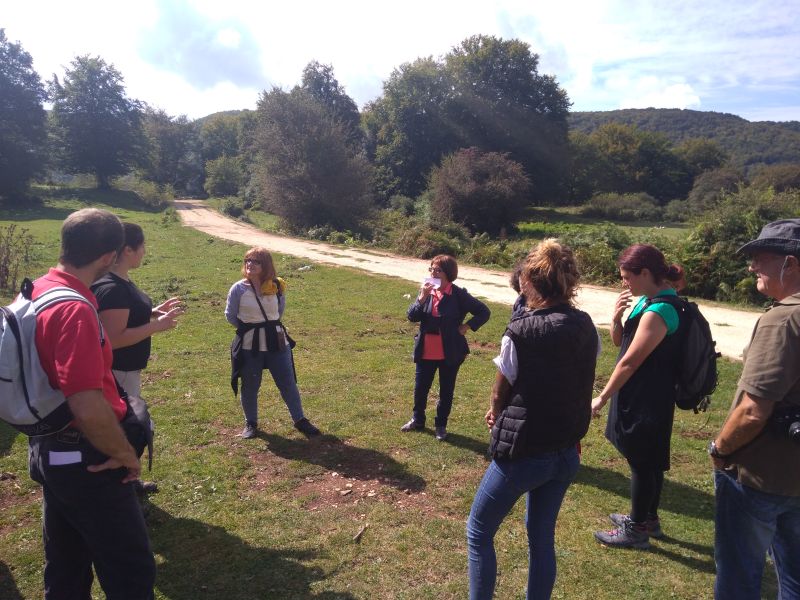
After the field work, in lunch time, after sharing typical products, the public took part in the discussion among archaeologists on the daily findings and on possible developments in research and development work in the Montagnola area.
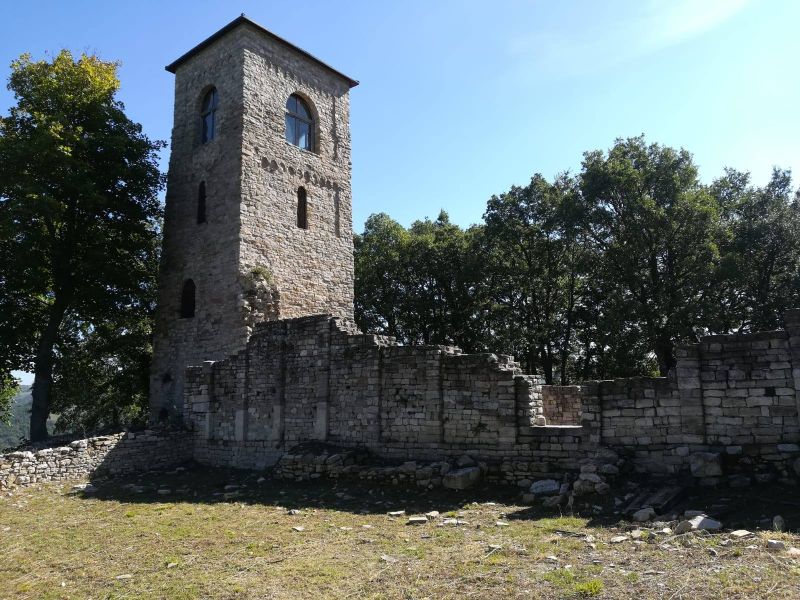
Also in the territory of Civitanova del Sannio, near the river Trigno, a tree-lined path leads us, going up, to the locality of San Brigida where the ruins of an ancient Abbey can still be seen. This is the Monastery of St. Benedict, called De Jumento Albo.
It was built around the year 1000. For about 400 years it constituted the place where men consecrated to God, the monks, lived. In December 1456 a violent earthquake, which shook south central Italy, destroyed the monastery for several decades now uninhabited.
Today we can only see the bell tower, restored and almost completely rebuilt in 2009, and the church remains, since 2014 interested by the excavations of University Suor Orsola Benincasa of Naples.
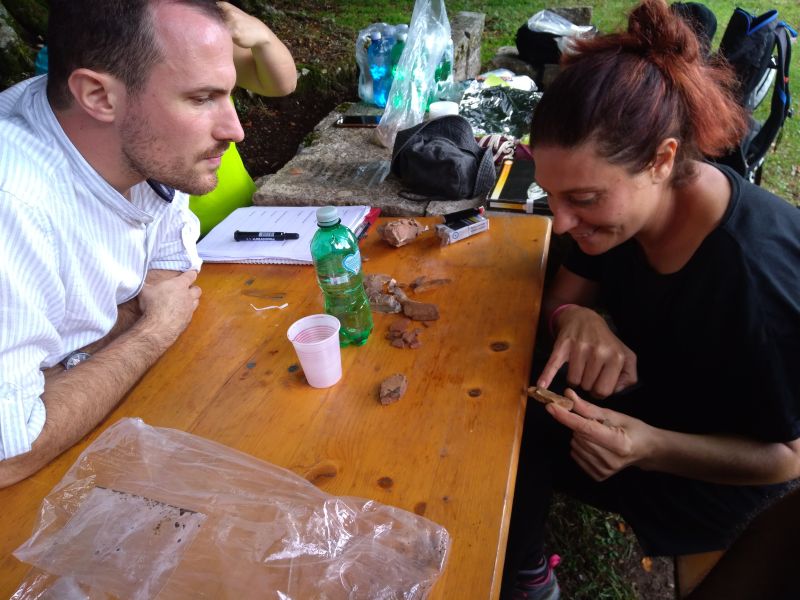

As for the days of 8 and 9 September, also for 22 and 23 September a group of archaeologists from Molise, passionate adults and children, have investigated the area surrounding the monastery, documenting and collecting various finds.
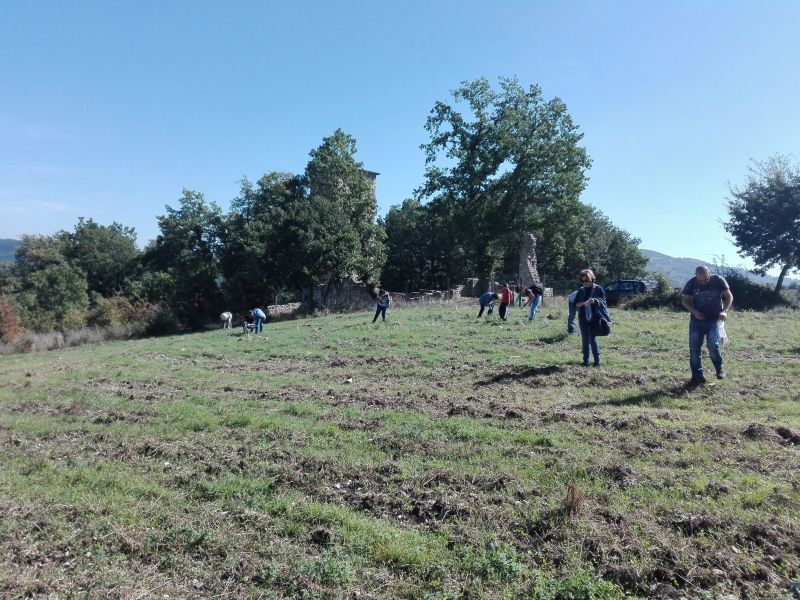
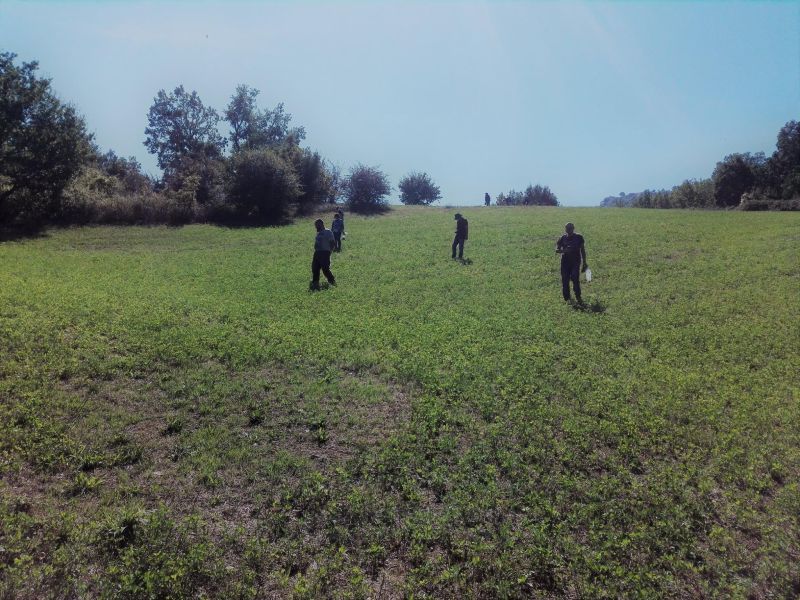
Remainders of big tiles, black-glazed and sigillata pottery and a terracotta figure of a horse we have been found in the fields around the church.
Finds dating back to the Roman time, a previous phase of frequentation of this area, just hypothesized before seen the materials reused to build the medieval church.
Finally, about 150 m northwest of the Church, an underground structure was found, perhaps a Roman cistern.
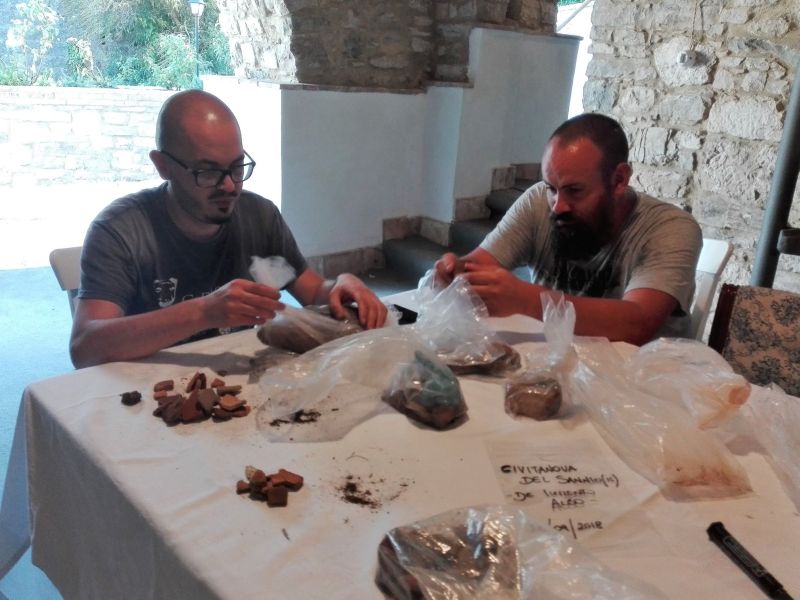
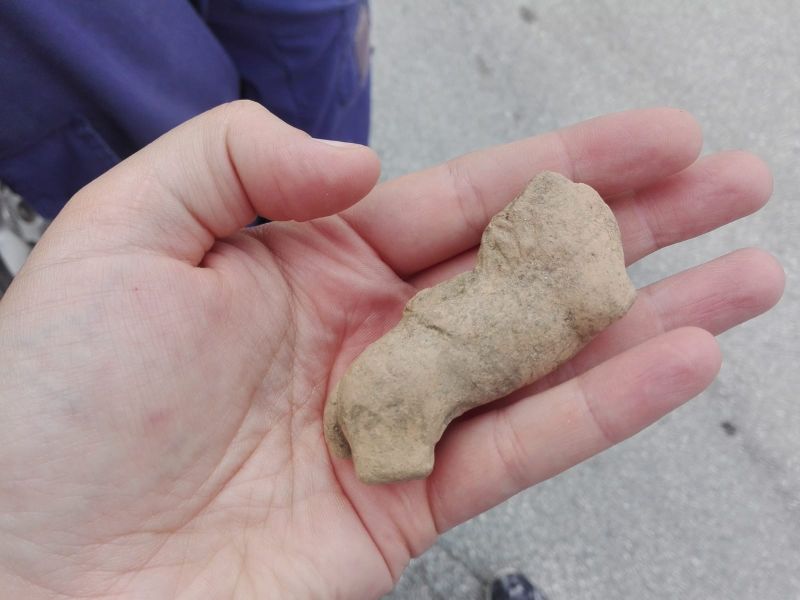
MONTAGNOLA MOLISANA, May 13, 2018
13th May it is celebrated, throughout the national territory, the Journey of Common Heritage by Italia Nostra ONLUS organization. It is a Journey to sensitize citizens on archaeological heritage at risk in Italy. Each regional committee of Italia Nostra identifies an archaeological risk in your region. Provincial commitee of Campobasso has chosen to move citizens in cleaning historic ice houses in mountain and a historic haystack, in a pastoral activity district until the middle of the twentieth century. Activity was made in collaboration with the Superintendence Archaeology, Fine Arts and Landscape in Molise of the Ministry of Heritage, Activities and Tourism.
THE ICE HOUSES IN THE MONTAGNOLA MOLISANA ( 1400 mt.)
With the supervision of the archaeologist Francesca Di Palma, of the Municipality of Civitanova del Sannio, a group of citizens has put in sight two ice houses freeing them from weeds.

These two were part of a row of fifteen ice houses (“neviere”), placed on a point in the mountain where the snow settles more abundantly in winter. Each ice house was deep and wide enough to get: wide to have maximum harvesting capacity but not too much so as not to melt snow; not too deep to be able to get inside and collect the snow; for most of the depth below rock level to keep the snow frozen.

It is known that until the middle of the twentieth century the snow was collected to be used, among other things, by ice cream makers in the summer village parties.
During the cleaning works, the citizens were able to listen to the history and the construction techniques of the ice houses, and at the same time becoming protagonists as the first person for their protection and enhancement.

THE HAYSTACK
After cleaning the ice house in the mountain we went downhill to clean a dry stone structure with a tholos roof (“pagliare”), used up to decades ago to store straw.

But it is not known when it was built. Again, citizens cleaning the structure, literally masked by weeds, were able to discover the sight of its original structure and learn its use by the peasant community.


The day ended with the sharing of typical dishes of the region, also linked to the farming world of the past, such as the ice houses and the haystack.

CAMPOBASSO, March 7, 2018
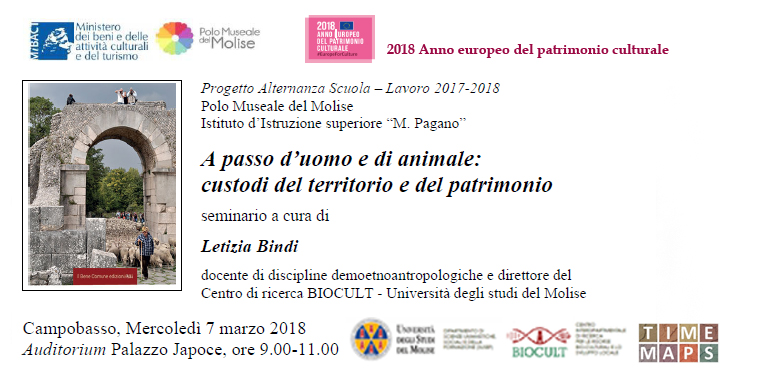
A travel in the Neolithic in the Archaeological Museum of Venafro, Tratturi, June 9th 2017
The traces affected by the tratturi to the transhumance in historical times, were probably the same ones that the first shepherds have traveled in the Neolithic age. So also an activity with the school public that foresees the knowledge of the Neolithic can help to make children understand the possible antiquity of these tracks, today candidate at the UNESCO World Heritage.
Within the school / work alternation project, promoted by the Italian Ministry of Education and University Research (M.I.U.R.), the Regional Direction of the State Museum of Molise he hosted a series of activities with professors and students. The aim was to make the students work on the archaeological heritage in the normal activities of museums. In the Archaeological Museum of Venafro, there was the need to install an exhibition on the Neolithic evidences discovered in 2014 during the excavation of a pipeline. Seven students from the third year of high school were involved.
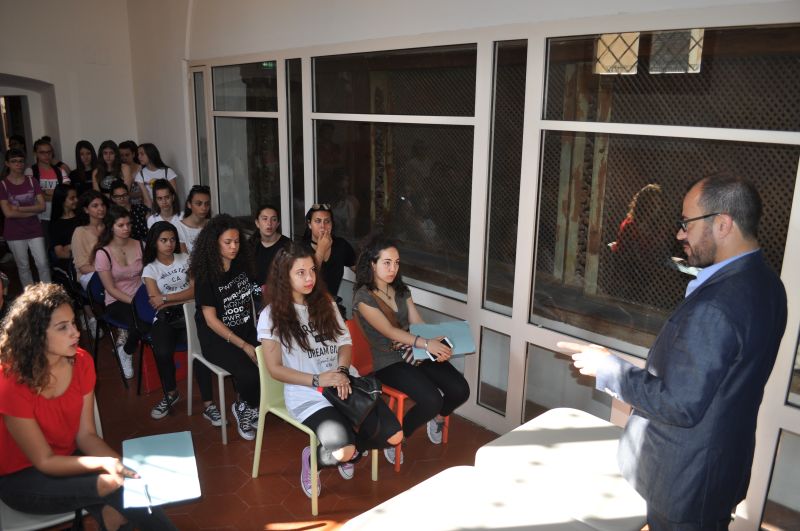
Near Venafro in 2014 evidences of a Neolithic village have been found, during the works coordened by Dr. Diletta Colombo of the Superintendence Archaeology, Fine Arts and Landscape of Molise. Along with this, a child skeleton was found, that is the oldest inhabitant of Venafro until now known. Everything is dated about 8,000 years ago, thanks to the ceramic style and the optical luminescence analysis of the soil.
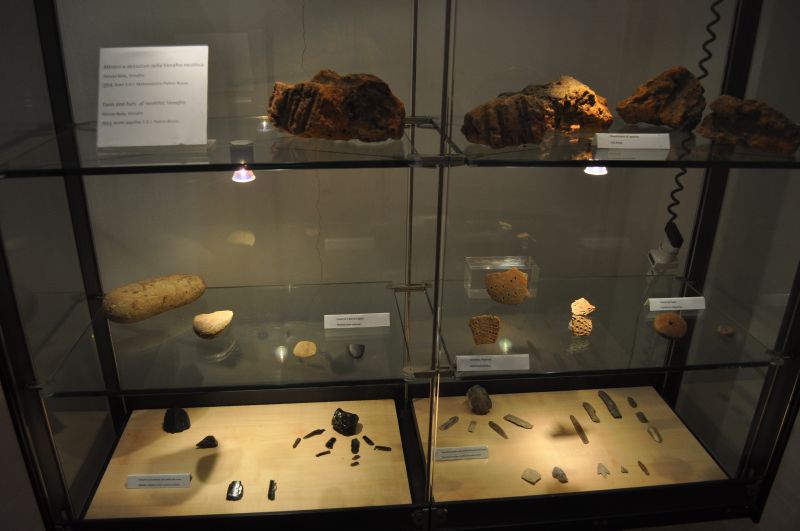
Students, with the support of their professor of humanities and of the archaeologist of the Museum, took knowledge of archaeological materials and themes related to the following areas: finding context, Neolithic diet, dating methods in archeology and what was the Neolithic.
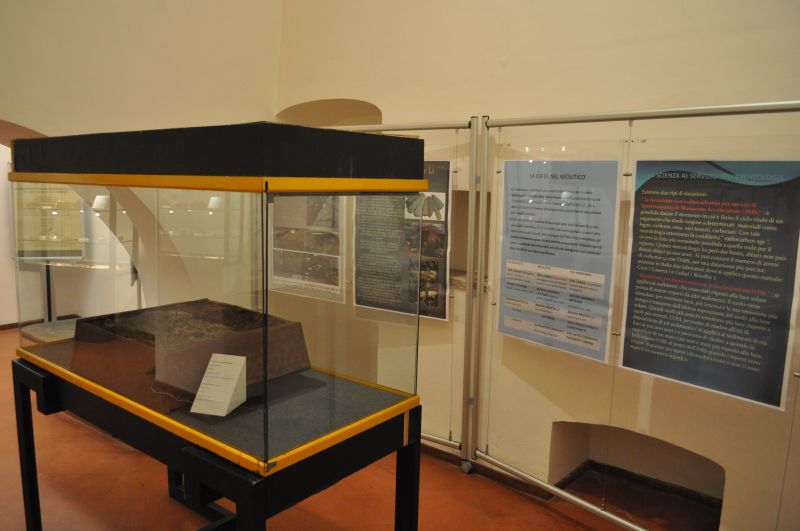
After this brief training, the students were left independent in managing the production of the exhibition’s communication supports: they thought and realized graphics, contents and language of the posters that explain the Neolithic world, how the human diet changed from the Paleolithic and how it differs from the current one, how and where the remains of the Neolithic Venafro were found and how the archaeologists are date the context. A student also wrote a story on the child skeleton and a poster was dedicated to it.
On the last day of school, on June 9th 2017, the exhibition was inaugurated and the seven students served as guides to the exhibition, while other students explained to their colleagues the whole museum.
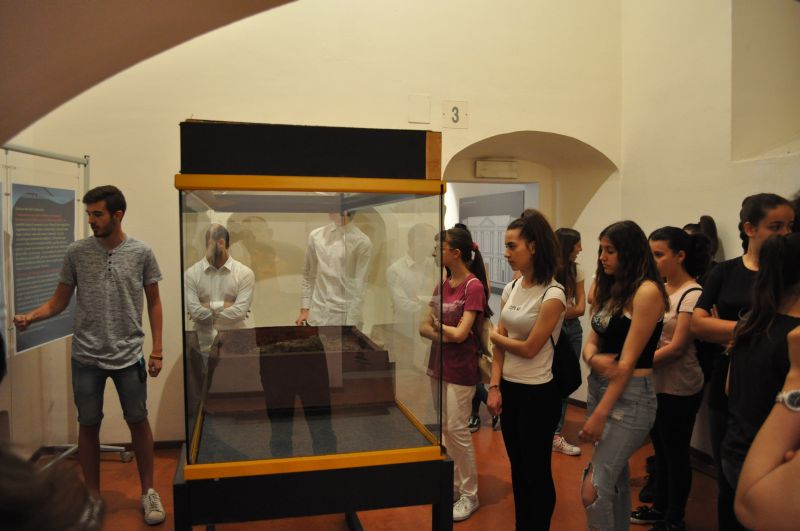
160 students they had the chance to get to know the local Neolithic through an exhibition with archaeological artefacts, posters conceived and written by their peers and guided by their classmates also in the discovery of the archaeological museum.
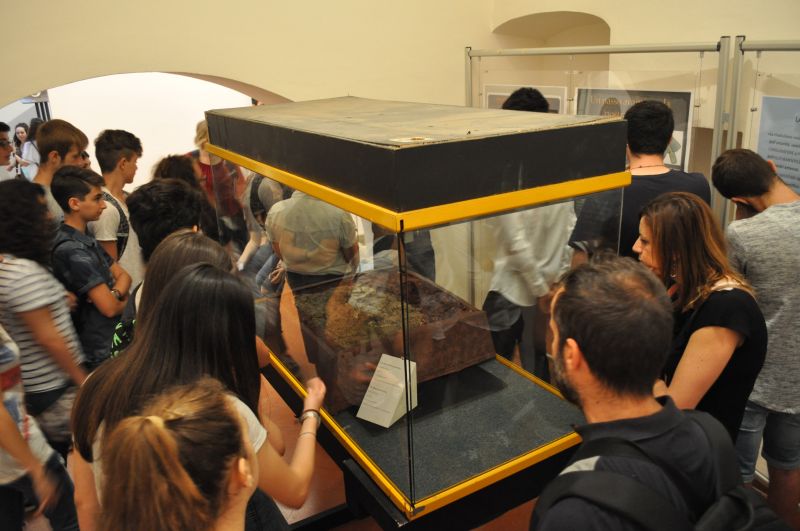
Tales of the Abbey under stars, San Vincenzo al Volturno, August – September, 2017
This event was planned to link the monastic life with the knowledge, in an interactive event, like those that had occurred in the Benedictine communities in the Middle Age. Ancient Abbey of San Vincenzo al Volturno is, today, a large archaeological area which allows to visit and understand a considerable part of the ancient structures and the night of 10th august is commonly a good moment to look and discover constellations, planets, stars and shooting stars.
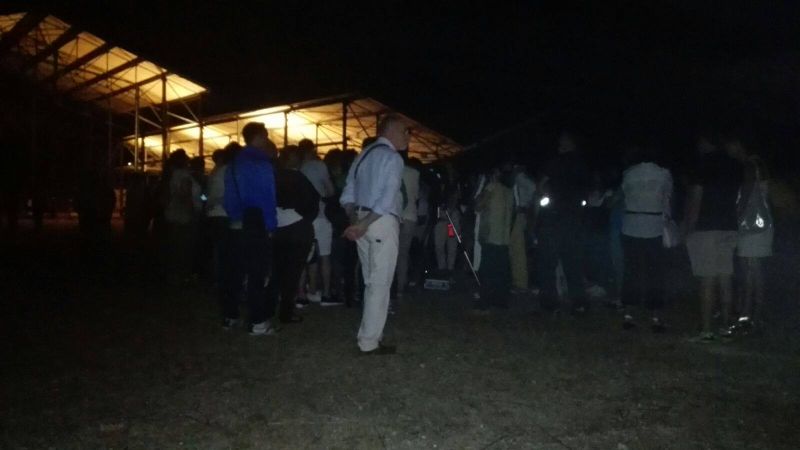
By combining these two favorable factors, together with the charm of the archaeological area illuminated at night, public was involved in a reasoned guided tour:
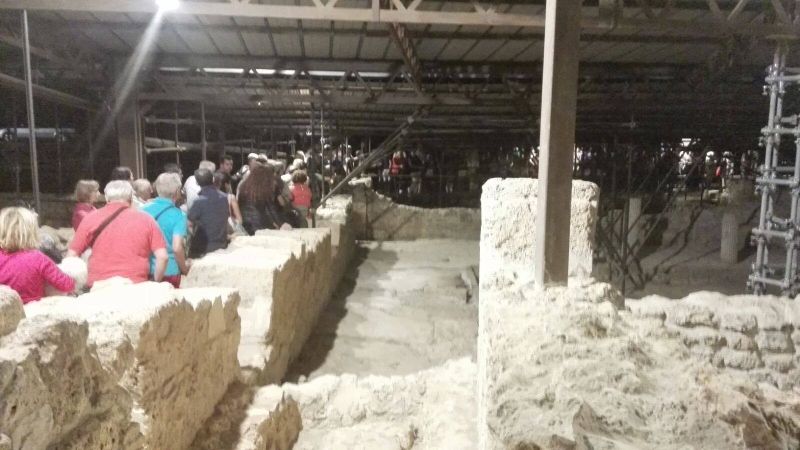
The different abbey environments, like refectory, churches, Chapter room or works area, have been shown and commented by prof. Federico Marazzi and Dr. Simona Carracillo, following the “Rule of St. Benedict”, which ruled the daily life of the monks. In this way, public could look, understand and live the planning of the abbey structures, the timing of daily life of monks, the link between abbey architecture and the maxim “ora et labora”.
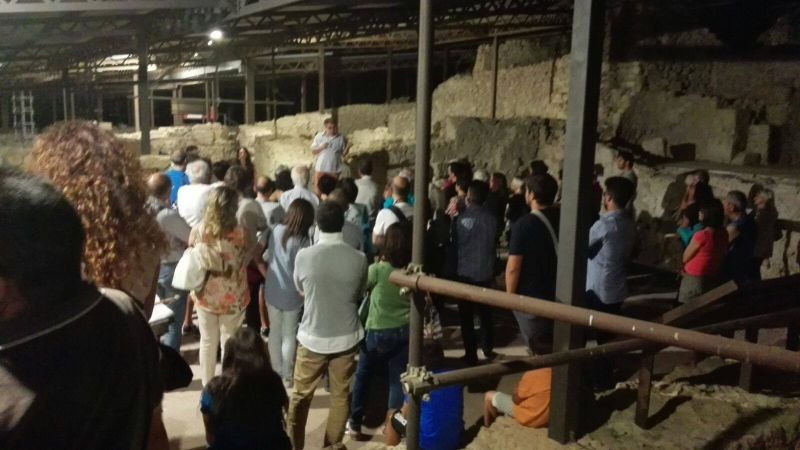
After the “reasoned” visit of the abbey where, within the scope of its activities in Middle Age, knowledge was rescued and valorized, in the large open space of ruined big church of San Vincenzo Maggiore, inside at the medieval abbey area, public could approach astrophysics science with prof. Dario Mancini: observing the constellations, the stars and the planets in the night sky with a portable telescope, and talking and asking questions, people of all ages could be able to dive for some hours, informally, in a world of astrophysics. In this way, for one night, the ruined abbey of San Vincenzo is returned to one of its ancient functions: to be a place of knowledge.
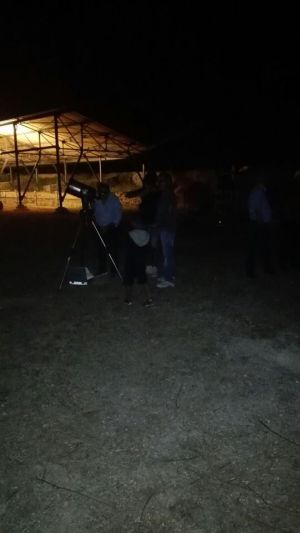
Workshop disclosure, San Vincenzo al Volturno, August 2017
